Climate & Environment
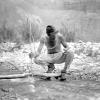 At the start of World War I, a scientist named Eugene Clyde La Rue hiked the American West to estimate how much water flows down the Colorado River. His findings were ignored, but leaders today don't have to make the same mistake, says CU Boulder hydrologist Shemin Ge.
At the start of World War I, a scientist named Eugene Clyde La Rue hiked the American West to estimate how much water flows down the Colorado River. His findings were ignored, but leaders today don't have to make the same mistake, says CU Boulder hydrologist Shemin Ge.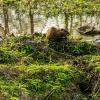 Researchers caution, while they also come with benefits, large-scale beaver reintroduction efforts could inadvertently spread mercury-containing neurotoxins in the environment and food chains.
Researchers caution, while they also come with benefits, large-scale beaver reintroduction efforts could inadvertently spread mercury-containing neurotoxins in the environment and food chains.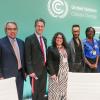 CU Boulder was a key partner in the development of a set of human rights climate commitments released at COP28 in Dubai. The commitments stem from the Right Here, Right Now Global Climate Summit held on campus in December 2022.
CU Boulder was a key partner in the development of a set of human rights climate commitments released at COP28 in Dubai. The commitments stem from the Right Here, Right Now Global Climate Summit held on campus in December 2022. At this year's meeting of the American Geophysical Union (AGU), CU Boulder researchers will share results on everything from Earth's crusts and oceans to planets hundreds of light-years away.
At this year's meeting of the American Geophysical Union (AGU), CU Boulder researchers will share results on everything from Earth's crusts and oceans to planets hundreds of light-years away.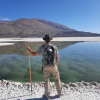 In Argentina's Puna de Atacama, a parched plateau more than 12,000 feet above sea level, a series of lagoons are home to microbial communities that seem to resemble nothing else alive on Earth today. But time may be running out to study them.
In Argentina's Puna de Atacama, a parched plateau more than 12,000 feet above sea level, a series of lagoons are home to microbial communities that seem to resemble nothing else alive on Earth today. But time may be running out to study them. Professor Colleen Lyons shares her take on a loss and damage fund to support forest health around the world as a critical climate change mitigation strategy. She is presenting a related call to action at COP28.
Professor Colleen Lyons shares her take on a loss and damage fund to support forest health around the world as a critical climate change mitigation strategy. She is presenting a related call to action at COP28.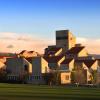 A research group in CU Boulder's Department of Civil, Environmental and Architectural Engineering received an $8 million grant from the U.S. Department of Energy to provide technical assistance that aids nonprofits in cutting energy use. The project places a significant emphasis on involving and training students in all stages of renovating existing buildings.
A research group in CU Boulder's Department of Civil, Environmental and Architectural Engineering received an $8 million grant from the U.S. Department of Energy to provide technical assistance that aids nonprofits in cutting energy use. The project places a significant emphasis on involving and training students in all stages of renovating existing buildings.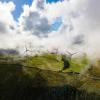 Beginning Nov. 30, world leaders and climate experts will gather in Dubai for the 28th United Nations Climate Change Conference to address the climate crisis and help vulnerable communities adapt. Learn more about CU Boulder's expertise and involvement.
Beginning Nov. 30, world leaders and climate experts will gather in Dubai for the 28th United Nations Climate Change Conference to address the climate crisis and help vulnerable communities adapt. Learn more about CU Boulder's expertise and involvement.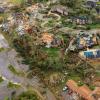 After a year of fire, heat, floods and droughts across the world, Pedro DiNezio shares predictions on what could happen next year—and what we can do about it.
After a year of fire, heat, floods and droughts across the world, Pedro DiNezio shares predictions on what could happen next year—and what we can do about it. Across the university, researchers are racing to find solutions to slow the rate of climate change and potentially reverse its course.
Across the university, researchers are racing to find solutions to slow the rate of climate change and potentially reverse its course.


